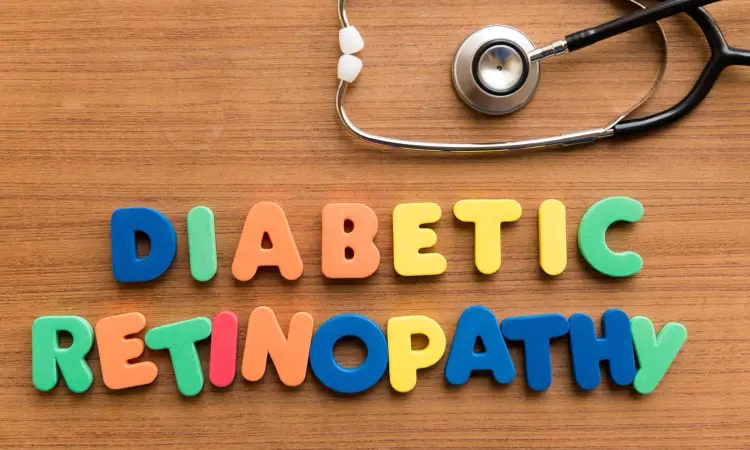- Home
- Medical news & Guidelines
- Anesthesiology
- Cardiology and CTVS
- Critical Care
- Dentistry
- Dermatology
- Diabetes and Endocrinology
- ENT
- Gastroenterology
- Medicine
- Nephrology
- Neurology
- Obstretics-Gynaecology
- Oncology
- Ophthalmology
- Orthopaedics
- Pediatrics-Neonatology
- Psychiatry
- Pulmonology
- Radiology
- Surgery
- Urology
- Laboratory Medicine
- Diet
- Nursing
- Paramedical
- Physiotherapy
- Health news
- Fact Check
- Bone Health Fact Check
- Brain Health Fact Check
- Cancer Related Fact Check
- Child Care Fact Check
- Dental and oral health fact check
- Diabetes and metabolic health fact check
- Diet and Nutrition Fact Check
- Eye and ENT Care Fact Check
- Fitness fact check
- Gut health fact check
- Heart health fact check
- Kidney health fact check
- Medical education fact check
- Men's health fact check
- Respiratory fact check
- Skin and hair care fact check
- Vaccine and Immunization fact check
- Women's health fact check
- AYUSH
- State News
- Andaman and Nicobar Islands
- Andhra Pradesh
- Arunachal Pradesh
- Assam
- Bihar
- Chandigarh
- Chattisgarh
- Dadra and Nagar Haveli
- Daman and Diu
- Delhi
- Goa
- Gujarat
- Haryana
- Himachal Pradesh
- Jammu & Kashmir
- Jharkhand
- Karnataka
- Kerala
- Ladakh
- Lakshadweep
- Madhya Pradesh
- Maharashtra
- Manipur
- Meghalaya
- Mizoram
- Nagaland
- Odisha
- Puducherry
- Punjab
- Rajasthan
- Sikkim
- Tamil Nadu
- Telangana
- Tripura
- Uttar Pradesh
- Uttrakhand
- West Bengal
- Medical Education
- Industry
TSH levels linked to diabetic retinopathy development in T2D patients

A new study published in Diabetes/Metabolism Research and Reviews suggests that greater thyroid-stimulating hormone (TSH) within the normal range was linked to a greater incidence of Diabetic retinopathy (DR) in type 2 diabetes patients with well-controlled glycaemic state.
Even with type 2 diabetes that is under control, diabetic retinopathy can develop, indicating that there are still DR concerns in this population. Yaxin Wang and colleagues specifically looked at the combined impact of thyroid function and glycemic management as measured by a newly developed metric called time in range (TIR) with DR.
A total of 2740 type 2 diabetic individuals with euthyroid disease were included in this cross-sectional investigation. Thyroid-stimulating hormone, free thyroxine, free triiodothyronine, thyroid peroxidase antibody, and thyroglobulin antibody were among the thyroid markers examined. Data from a continuous glucose metre were used to calculate TIR.
The key findings of this study were:
1. Overall, 1.06 (95% confidence interval [CI] 0.85-1.32) and 1.48 (95% CI 1.19-1.85) were the multivariable-adjusted odds ratios (ORs) for DR across rising tertiles of TSH, respectively.
2. The frequency of DR was 23.8% even in well-controlled patients who met a TIR objective of >70% (n = 1459) and was strongly correlated with TSH (OR = 1.54, 95% CI 1.12-2.12, highest vs. lowest TSH tertile).
3. The joint categories of TIR (>70%, 70%) and TSH (tertiles) were used to divide the participants into 6 groups, and the multivariable-adjusted ORs for DR were highest in the TIR 70% and the highest TSH tertile group when compared to the TIR >70% and the lowest TSH tertile group (OR = 1.96, 95% CI 1.41-2.71).
In conclusion, this finding implies that thyroid dysfunction may contribute to the residual risk of DR. For improved DR management in clinical practise, more consideration should be given to the potential effects of both TIR and TSH. To further support the significance of TSH in risk management of diabetic complications and to investigate the reference range for "normal" TSH in the future, well-designed longitudinal studies involving TSH measurements at several time periods are necessary.
Reference:
Wang, Y., Lu, J., Ni, J., Wang, M., Shen, Y., Lu, W., Zhu, W., Bao, Y., & Zhou, J. (2023). Association of thyroid stimulating hormone and time in range with risk of diabetic retinopathy in euthyroid type 2 diabetes. In Diabetes/Metabolism Research and Reviews. Wiley. https://doi.org/10.1002/dmrr.3639
Neuroscience Masters graduate
Jacinthlyn Sylvia, a Neuroscience Master's graduate from Chennai has worked extensively in deciphering the neurobiology of cognition and motor control in aging. She also has spread-out exposure to Neurosurgery from her Bachelor’s. She is currently involved in active Neuro-Oncology research. She is an upcoming neuroscientist with a fiery passion for writing. Her news cover at Medical Dialogues feature recent discoveries and updates from the healthcare and biomedical research fields. She can be reached at editorial@medicaldialogues.in
Dr Kamal Kant Kohli-MBBS, DTCD- a chest specialist with more than 30 years of practice and a flair for writing clinical articles, Dr Kamal Kant Kohli joined Medical Dialogues as a Chief Editor of Medical News. Besides writing articles, as an editor, he proofreads and verifies all the medical content published on Medical Dialogues including those coming from journals, studies,medical conferences,guidelines etc. Email: drkohli@medicaldialogues.in. Contact no. 011-43720751


